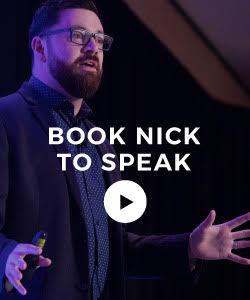If you use any social media, whether its Facebook, Twitter, or even Instagram, you’re no stranger to social media activism. It takes the form of Facebook profile picture overlays, trending hashtags, or the latest movement, Standing Rock location check-ins.
There are a lot of opposing viewpoints on whether those using social media to voice their opinions are just being lazy or if their tweet or status is actually helpful. There’s no doubt that social media has changed the activism game. It allows people with the same views and ideas to come together and feel part of a larger community or movement.
In any situation, it’s always a good idea to look at multiple sides in order to develop a well-rounded viewpoint; so I figured it was a good idea to look at what some people are saying about online activism.
Slacktivism
We all know people, and you may be one of them, who are quick to dismiss any sort of online activism. Citing it as being ineffective and a waste of time, they may offer up “better ways” to be an activist or just dismiss the whole movement. These people can often be heard saying things like “stop talking and do something about it.”
Some believe that displaying your support for certain causes is a way to grow your personal brand rather than champion an important cause. It has been called cultural capitalism, in which we feel compelled to buy into this idea of being part of a movement or protest.
A study was conducted recently to research whether online activism was as effective as more traditional routes. They found that “return rates for charities on Facebook are a tenth of those whose charities take traditional routes.” So it may be safe to argue that if your fundraising strategy relies solely on social media you will not see the same donation return as you might see by implementing multiple channels of fundraising.
One of the largest causes on Facebook, Save Darfur, has amassed over a million likes but has only received about $100,000 in donations. Over 98% of their online followers haven’t donated at all. This leads many wondering, what’s the point in gaining so much awareness if it doesn’t do much to help the cause?
Effective Activism
The other side of the coin is people who believe that digital activism is beneficial, despite perhaps its small donation results and outcomes. There are many who believe that talking and doing are not mutually exclusive actions.
One important point is that online activism is more accessible to those with disabilities who cannot attend rallies, protests, or canvassing. Erin Clifford, who is a member of the group Disabled People Against Cuts, has said, “Disabled people have taken social media and made it into their own medium, where they can have a voice on equal terms with their non-disabled counterparts, something not often afforded by society as a whole.” Online activism is also a great alternative to those who live in rural or small town areas as well as those who don’t have access to transportation in order to travel to protest.
A recent study found that social media activism plays a major part in turning a cause into a movement. There’s no other medium that allows for this sense of community. It’s the perfect route to post real-time updates and to get news in the quickest way possible.
Now with social media, people have more and more exposure to diverse stories and experiences which helps advocacy through education. It’s possible certain causes never received the attention they needed because so many people were unaware. Social media has broken that barrier and provided everyone with a voice and a network to educate themselves and others on the issues important to them.
Personally, I’ve seen something on Facebook or Twitter and then decided to go Google it in order to learn more about the issue. And I’m positive I’m not alone.
So Which One Is It?
If you’re a nonprofit, charity, or social justice group, and you’re looking for new, better ways to raise awareness for your cause, a good rule of thumb is to never rely on one strategy alone. This is also true for any company trying to market their products or services.
Traditional activism will always play a core role in raising funds, changing regulations, making a difference, but online activism also increases the efficacy and speed of that movement. They should work together to accomplish a greater goal.
People should still be hitting the streets to canvass, protest, or hand out flyers and others should still tweet out hashtags, share articles, and check-in to locations. If something is important to you, it’s probably important to someone else. Social media is just another stepping stone to help illuminate that voice.









